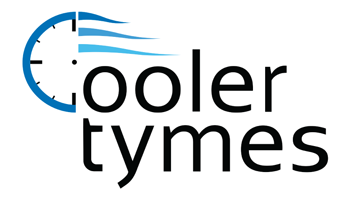
If you’re thinking about air conditioner installation in Litchfield Park, you should also be looking at your new air conditioner’s SEER rating.
SEER is short for Seasonal Energy Efficiency Rating. Basically, it measures how productive your air conditioner is at turning electricity into chilled air. A high number signifies your air conditioner is more efficient, which is good for your electrical bills.
However, there are many differing options available for air conditioners. And a better SEER number often is accompanied by a bigger cost. So, how do you know which one is ideal for your residence?
At Cooler Tymes LLC, we offer a free, no-pressure home comfort analysis. You can book one by contacting us at 623-208-6444. Our experienced air conditioner installers will partner with you to help you find the right air conditioner for your needs. Plus, they’ll also provide you with a free, no-obligation estimate.
Right now, let’s review SEER ratings and how they can influence your family’s comfort. And your energy bills.
Why Do the SEER Ratings Even Matter?
In 2016, the federal government created new SEER rules. New air conditioners are required to be at baseline 13 SEER in the northern United States and 14 SEER in the southeast and southwest. If you’re unsure when you had your air conditioner put in or what its SEER rating is, you can check the sticker on the condenser outside your house. If you can’t locate the sticker, you can get in touch with us at 623-208-6444 for support.
If your air conditioner was put in before that time, it’s presumably much less efficient. Cooling technology has rapidly advanced in the past several years, with major developments in energy efficiency and smart home compatibility. Using your new air conditioner with a smart thermostat could help you spend less on electrical expenses, since the thermostat can seamlessly change your temperature settings when you’re away.
If your current air conditioner has a SEER rating between 8 and 10, getting a 14-SEER system could save you an estimated 30–50% on annual electricity bills. Your savings depend on your air conditioner size and your thermostat settings.
Is a Higher SEER Rating Always Better?
An air conditioner with a greater SEER rating will be more efficient at transforming electricity for cooling. The highest efficiency models, which can go as high as 26 SEER, include ENERGY STAR® certification. This certification signifies the air conditioner matches EPA guidelines for energy savings and environmental conservation.
While ENERGY STAR air conditioners are often more costly, you’ll usually get the difference repaid over time through cheaper electric costs. These air conditioners, which are generally rated 16 SEER and greater, need about 8% less electricity than other new models, according to ENERGY STAR.
One of the biggest differences between a 14 SEER and 16 SEER is variable-speed technology. A variable-speed air conditioner can work at varying speeds. This fine-tunes comfort for your loved ones while keeping your air conditioning costs reduced. It can also keep temperatures and humidity more consistent, since it can go for longer without requiring a lot more electricity.
When getting a variable-speed air conditioner, you’ll want to check that your furnace or air handler is compatible. This is since your air conditioner depends on this system’s blower to send cool air around your home. Furnaces only work for about 20 years, so if yours is around that mark, we suggest getting furnace installation at the same time so you can enjoy all the benefits of your variable-speed air conditioner.
When you’re set to replace your air conditioner, the cooling professionals at Cooler Tymes LLC are here to support you. Give us a call at 623-208-6444 to request your free home comfort analysis now.
